1971, Maybelline Great Lash was born.
Maybelline the Movie" destined for TV by style.com
By Style.com
There are certain stories, so dramatic, so entertaining, that they seem positively destined for television. The Maybelline Story and the Spirited Family Dynasty Behind It fits the bill, with insight into all the brand’s history.
Let us give you a brief synopsis to properly whet your appetite for this incredible read: The saga begins in 1915, founder Tom Lyle Williams watched as his sister Mabel, applied a mixture of petroleum jelly, burnt cork, and coal dust to her damaged brows and lashes, in an effort to simulate fuller, more luxurious growth. Tom immediately saw dollar signs in his sister’s makeshift mascara, and so began the now billion-dollar business that is Maybelline (named after Mabel, who inspired its creation).
The book’s most publicized revelation is that Tom, despite being a married father, carried out a 50-year relationship with his partner Emery Shaver.
However We were far more fascinated by the vignette about Evelyn, Tom’s over-the-top glamorous sister-in-law. The night after opening her Maybelline Dinner Theatre inJun Arkansas with a star-studded gala in 1975 (Bill and Hillary Clinton were on the guest list), Evelyn perished in a suspicious house fire, and the crime was never solved.
It’s definitely a good beach book, if you’re headed for warmer climes this winter—and if anything, it will forever change the way you look at that pink and green tube of the brand’s best-selling Great Lash Mascara.
Beautiful Skin is just as important as having beautiful Maybelline eyes. 5 Amazing Ways to Reverse Crepey Skin
If your skin is thin, wrinkled, and it resembles crepe paper, then you’re probably a victim of crepey skin. It’s a result of your skin losing elastin and collagen. Although it’s common to develop loose skin as you grow older, sun damage is often the real cause of crepiness.
Over time, the UV rays coming from the sun break down collagen and elastin in your skin, thereby preventing it from repairing itself. The result is the skin that looks finely wrinkled just like crepe paper.
It’s worth noting that people with fair skin are more susceptible to crepiness as their skin produces less melanin, a pigment that safeguards your skin from UV radiation. The worst part? It makes you look older than your years.
Fortunately, it’s not something you have to embrace as part of your life. There are a lot of things you can do to minimize or prevent loose, wrinkled skin. In this article, we’re gonna share some amazing ways to reverse crepey skin.
Wear Sunscreen
Since sun damage is the leading cause of crepiness, it’s no brainer that wearing sunscreen could help with this problem. That being said, it’s crucial that you invest in a broad-spectrum sunscreen. Ideally, you should look for something with an SPF rating of 15 or above. Better yet, aim for an SPF level of 25 or higher.
This is because broad-spectrum sunscreens are capable of blocking both UVA and UVB rays. And we cannot say the same about sunscreens with a low SPF rating as they do not provide enough sun protection.
Hydration
Hydration is the secret to healthy skin. No matter your age or skin type, it’s always important to keep your skin hydrated and moisturized. And when you’ve got crepey skin, it becomes even more important.
Keeping your skin hydrated can help prevent skin tears and dryness. This ultimately prevents crepiness from exacerbating. Look out for creams that contain hyaluronic acid, glycerin, etc. In addition to keeping your skin hydrated, these ingredients also calm irritation.
Body Lotions
Certain ingredients such as retinol, vitamin C can increase skin elasticity and boost collagen production. Therefore, it’s wise to invest in products that contain such ingredients. Look for lotions and creams for crepey skin that stimulate the production of collagen and improve elasticity.
Hyaluronic acid is probably the most hydrating ingredient out there. So, if your lotion contains this ingredient, then there's a very good chance the product will work for you.
Eat Healthy
They say you’re what you eat and it’s true. If you’re eating healthy, you’re going to have healthy skin. To reduce the chances of developing crepiness, eat foods rich in omega-3 fatty acids and antioxidants.
Eggs, fish, leafy green vegetables, nuts, etc. are some of the foods you should consider adding to your diet. Maintaining a healthy diet would have a positive impact on your skin health.
Use Gentle Skincare Products
Skincare products containing harsh ingredients have the tendency to strip the skin of its natural oils. They cause dryness which can worsen the symptoms of crepey skin. Therefore, you should always use gentle skincare products.
Also, you should look for hypoallergenic formulas as they’re safe for sensitive skin. Irritation, itchiness, and redness are some of the things you’re better off when you’re dealing with crepiness.
In addition to this, you should consider exfoliating your skin once a week. This will increase cell turnover and remove dead skin cells. This will ultimately reveal thicker and younger skin.
That’s about it! Following the tips mentioned above, you can improve the appearance of crepey skin. If you have any questions, leave them in the comments below.
History of Maybelline: Kid Mogul from Morganfield Kentucky
Maybelline Company, est. 1915
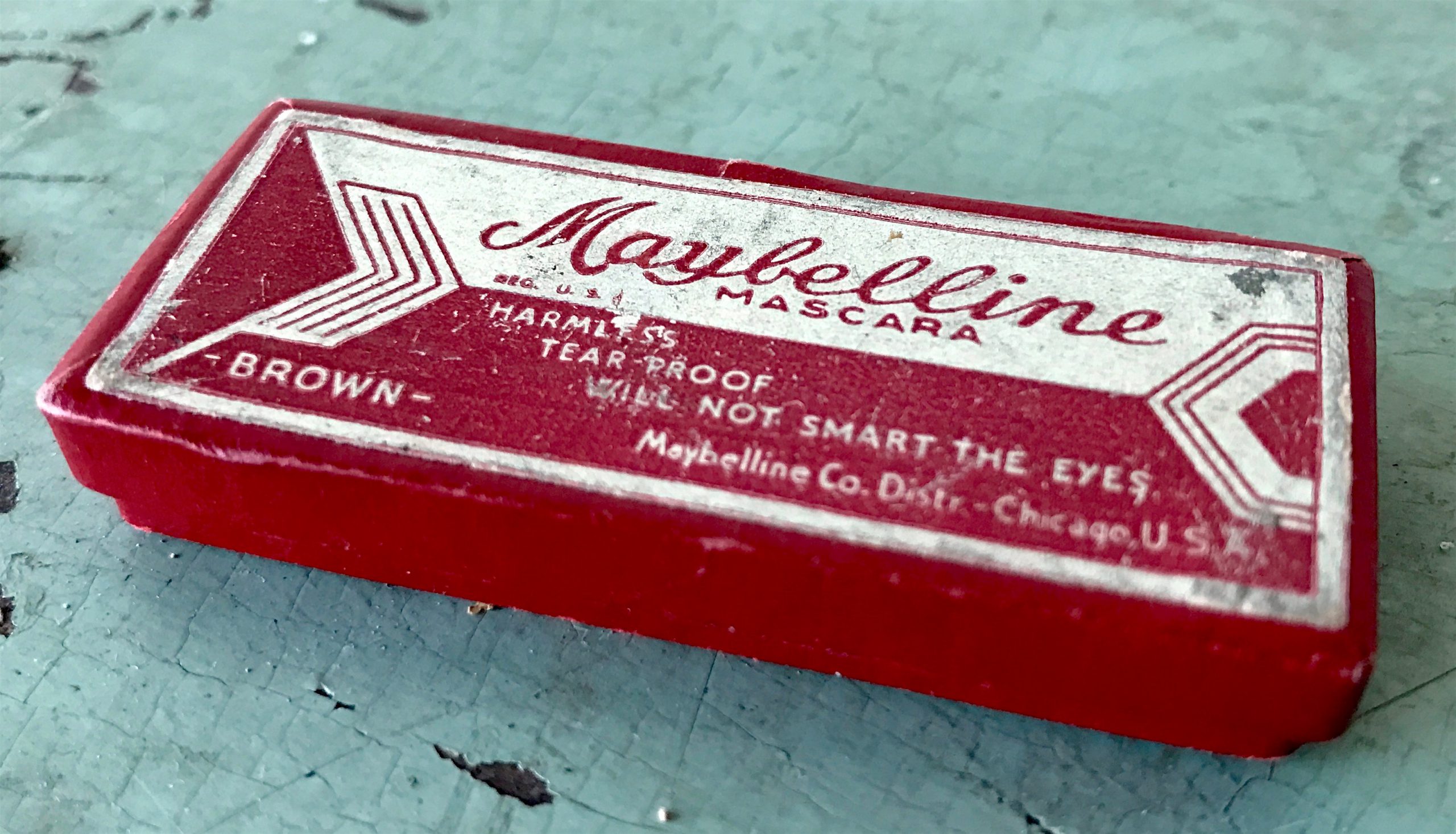
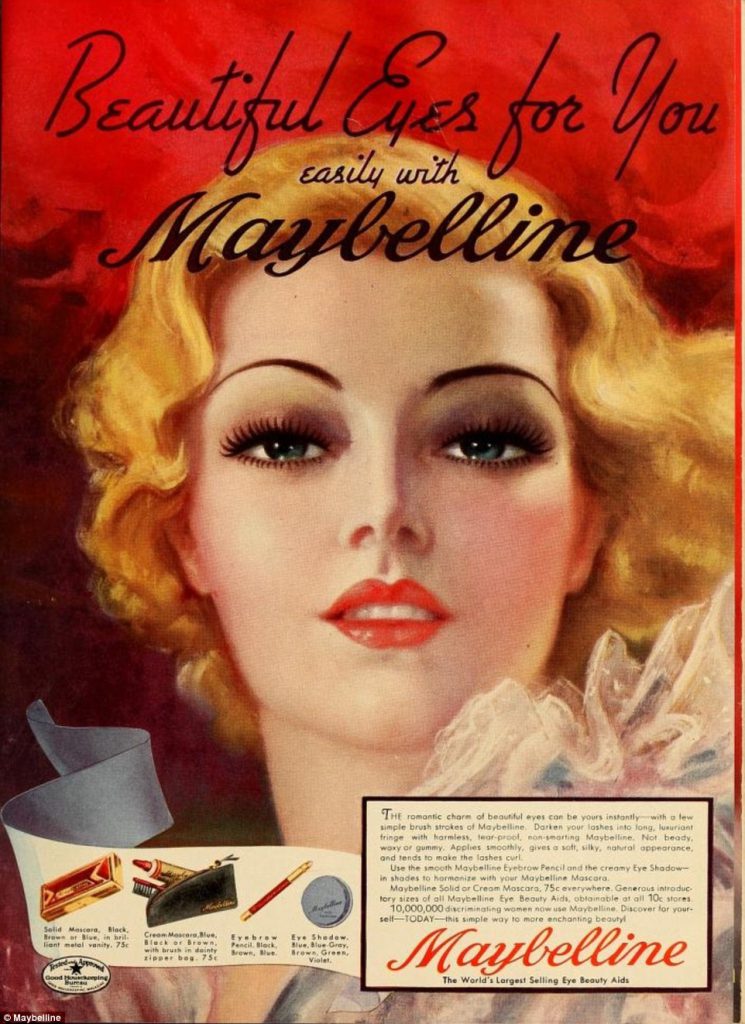 A promotional blitz that could have served as the long overdue “coming out” party for Maybelline’s pioneering but little-known founder, Thomas Lyle Williams (1896-1976), was instead reduced to a few vague bits of corporate trivia.
A promotional blitz that could have served as the long overdue “coming out” party for Maybelline’s pioneering but little-known founder, Thomas Lyle Williams (1896-1976), was instead reduced to a few vague bits of corporate trivia.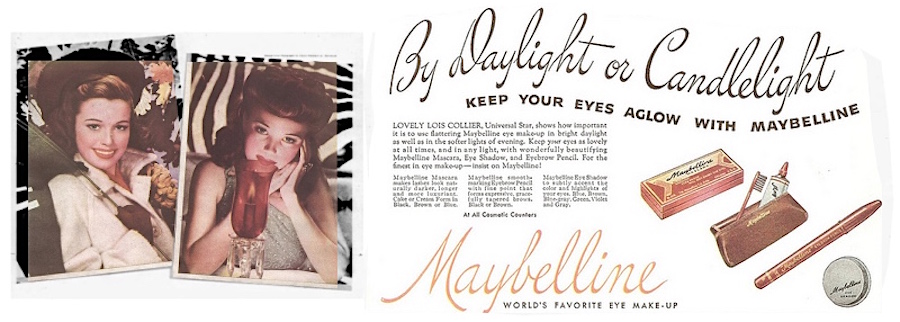 [A 1945 Maybelline ad, featuring actress Lois Collier, promoting the same small box of mascara from our museum collection. While Maybelline sold its mascara in metal vanities as early as the 1930s, our cardboard alternative was likely a product of rationing during WWII.]
[A 1945 Maybelline ad, featuring actress Lois Collier, promoting the same small box of mascara from our museum collection. While Maybelline sold its mascara in metal vanities as early as the 1930s, our cardboard alternative was likely a product of rationing during WWII.]History of Maybelline, Part I: Kid Mogul
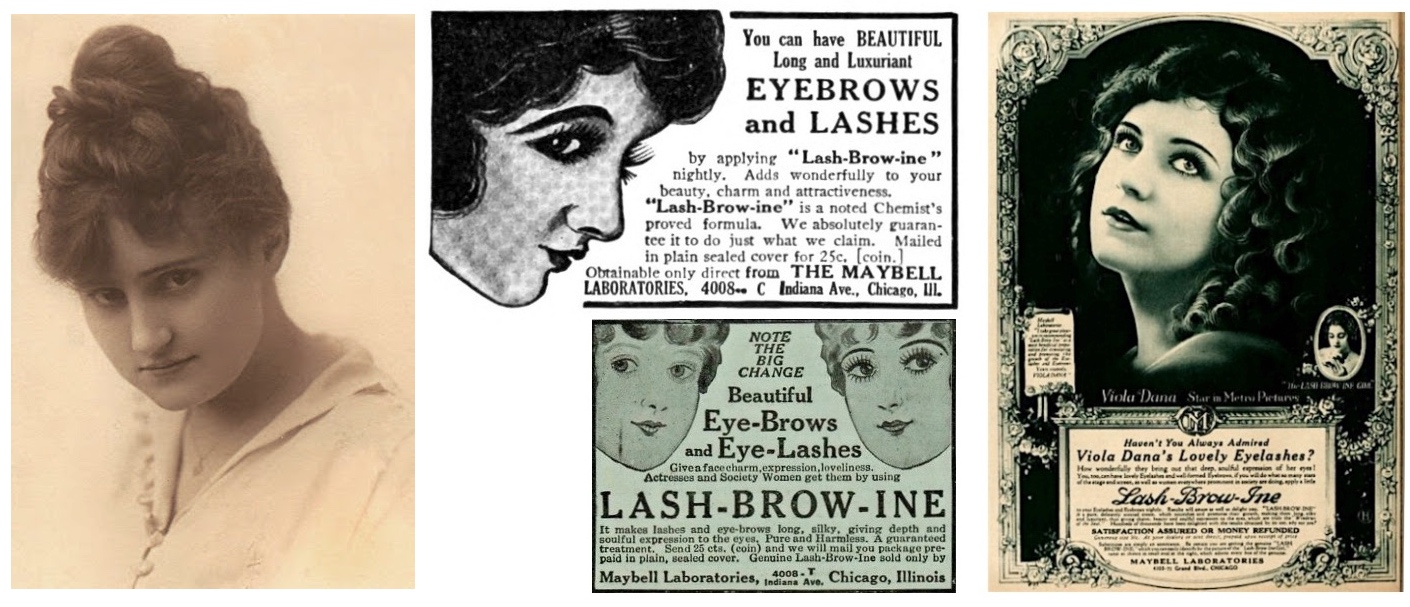 [Left: Mabel Williams, the girl who started it all. Center and Right: Early advertisements for Tom Lyle Williams’ first mail order product, Lash-Brow-Ine, which he sold under the banner of “Maybell Laboratories,” a play on his sister’s name]
[Left: Mabel Williams, the girl who started it all. Center and Right: Early advertisements for Tom Lyle Williams’ first mail order product, Lash-Brow-Ine, which he sold under the banner of “Maybell Laboratories,” a play on his sister’s name]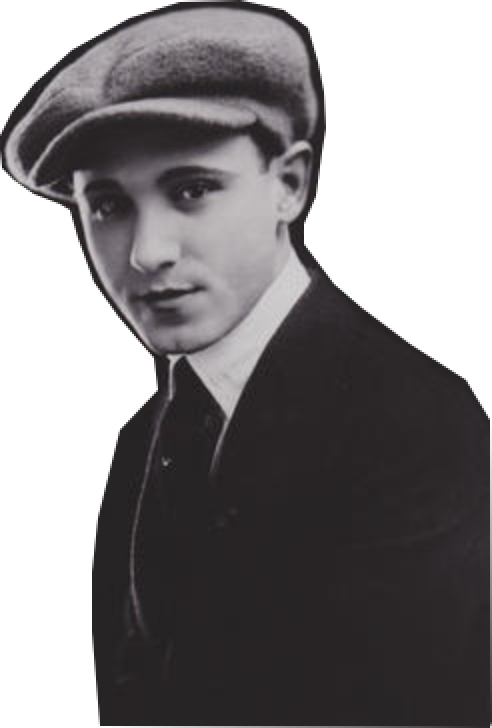 Presuming that plenty of other girls must be doing something similar in front of their vanity mirrors, Tom Lyle [pictured] found himself a chemistry set and tried adapting his sister’s formula into a more stable brand of commercial cosmetic. We could say that he “invented” modern mascara right there, but it took a while, along with some significant help from the labs of Parke, Davis & Co., an established pharmaceutical maker. Eventually, the result was Lash-Brow-Ine, a product name that intentionally played on the popularity of the Vaseline brand, much as Maybelline would a few years later.
Presuming that plenty of other girls must be doing something similar in front of their vanity mirrors, Tom Lyle [pictured] found himself a chemistry set and tried adapting his sister’s formula into a more stable brand of commercial cosmetic. We could say that he “invented” modern mascara right there, but it took a while, along with some significant help from the labs of Parke, Davis & Co., an established pharmaceutical maker. Eventually, the result was Lash-Brow-Ine, a product name that intentionally played on the popularity of the Vaseline brand, much as Maybelline would a few years later.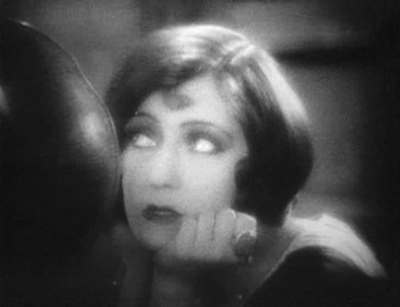 [Silent film star Gloria Swanson was one of several actresses to appear in Lash-Brow-Ine advertisements, connecting the product to the glamour of the cinema]
[Silent film star Gloria Swanson was one of several actresses to appear in Lash-Brow-Ine advertisements, connecting the product to the glamour of the cinema]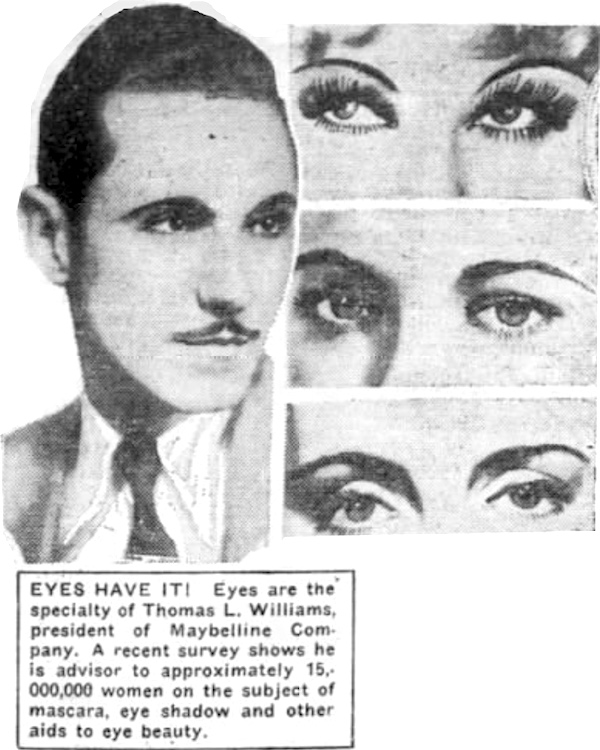 Maybelline’s modern celebrity-centric marketing strategy clearly dates back to its inception, and it’s in that department where Tom Lyle Williams’ talents were best on display—first as an ambitious teenager, and later as the president and pilot of the Maybelline brand for the entirety of its 50 years in Chicago.
Maybelline’s modern celebrity-centric marketing strategy clearly dates back to its inception, and it’s in that department where Tom Lyle Williams’ talents were best on display—first as an ambitious teenager, and later as the president and pilot of the Maybelline brand for the entirety of its 50 years in Chicago.II. All in the Family
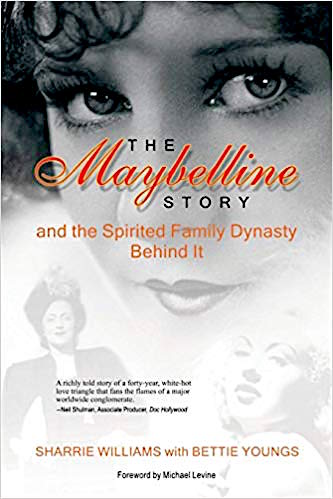 The author, Ms. Williams, was kind enough to share her insights with the Made-In-Chicago Museum, and we started by asking her about the role of Chicago itself as a character in this colorful drama.
The author, Ms. Williams, was kind enough to share her insights with the Made-In-Chicago Museum, and we started by asking her about the role of Chicago itself as a character in this colorful drama.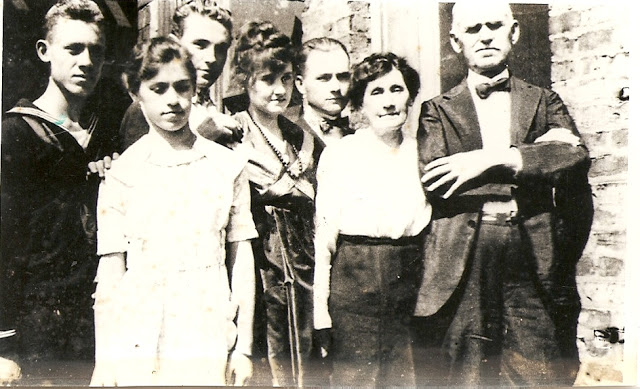 [The Williams family in 1916, from left: Tom’s brother Preston, sister Eva, Tom himself, the marvelous Ms. Mabel, brother Noel, and parents Susan and Thomas J. Williams]
[The Williams family in 1916, from left: Tom’s brother Preston, sister Eva, Tom himself, the marvelous Ms. Mabel, brother Noel, and parents Susan and Thomas J. Williams] “Everyone worked together,” says Sharrie Williams, “first out of their kitchen, where they poured the original Lash-Brow-Ine into little tins at the table and carried bags of mail in wheel barrels from the train station. Later, as the Maybelline Company expanded, employees were hired. Tom Lyle’s partner, Emery Shaver, worked with him in Hollywood on Maybelline advertising, contracting the biggest Stars of the era. Tom and Emery became bi-coastal, traveling from California to Chicago, keeping an apartment on Sheridan Road. Noel J. Williams ran the Company as Vice President.”
“Everyone worked together,” says Sharrie Williams, “first out of their kitchen, where they poured the original Lash-Brow-Ine into little tins at the table and carried bags of mail in wheel barrels from the train station. Later, as the Maybelline Company expanded, employees were hired. Tom Lyle’s partner, Emery Shaver, worked with him in Hollywood on Maybelline advertising, contracting the biggest Stars of the era. Tom and Emery became bi-coastal, traveling from California to Chicago, keeping an apartment on Sheridan Road. Noel J. Williams ran the Company as Vice President.”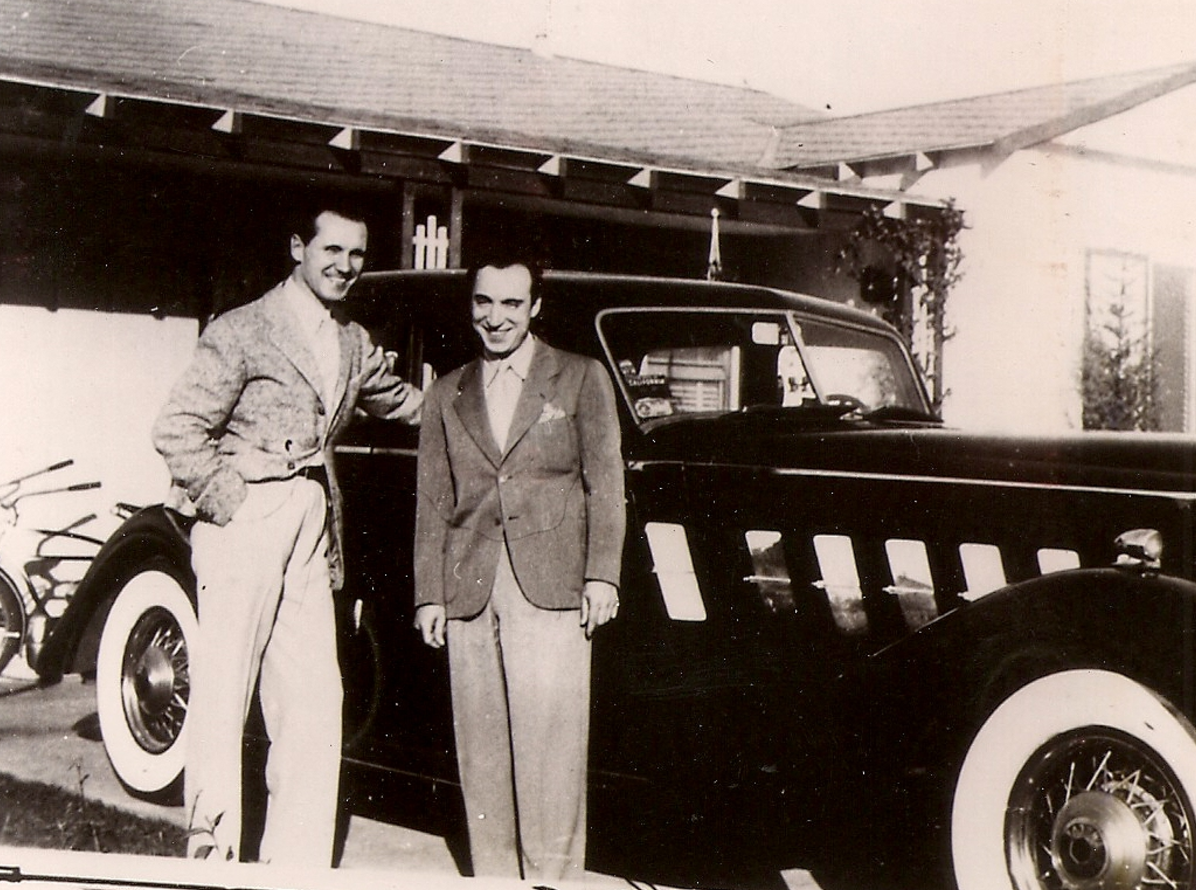 [Tom Lyle Williams with his partner of 50 years, Emery Shaver]
[Tom Lyle Williams with his partner of 50 years, Emery Shaver]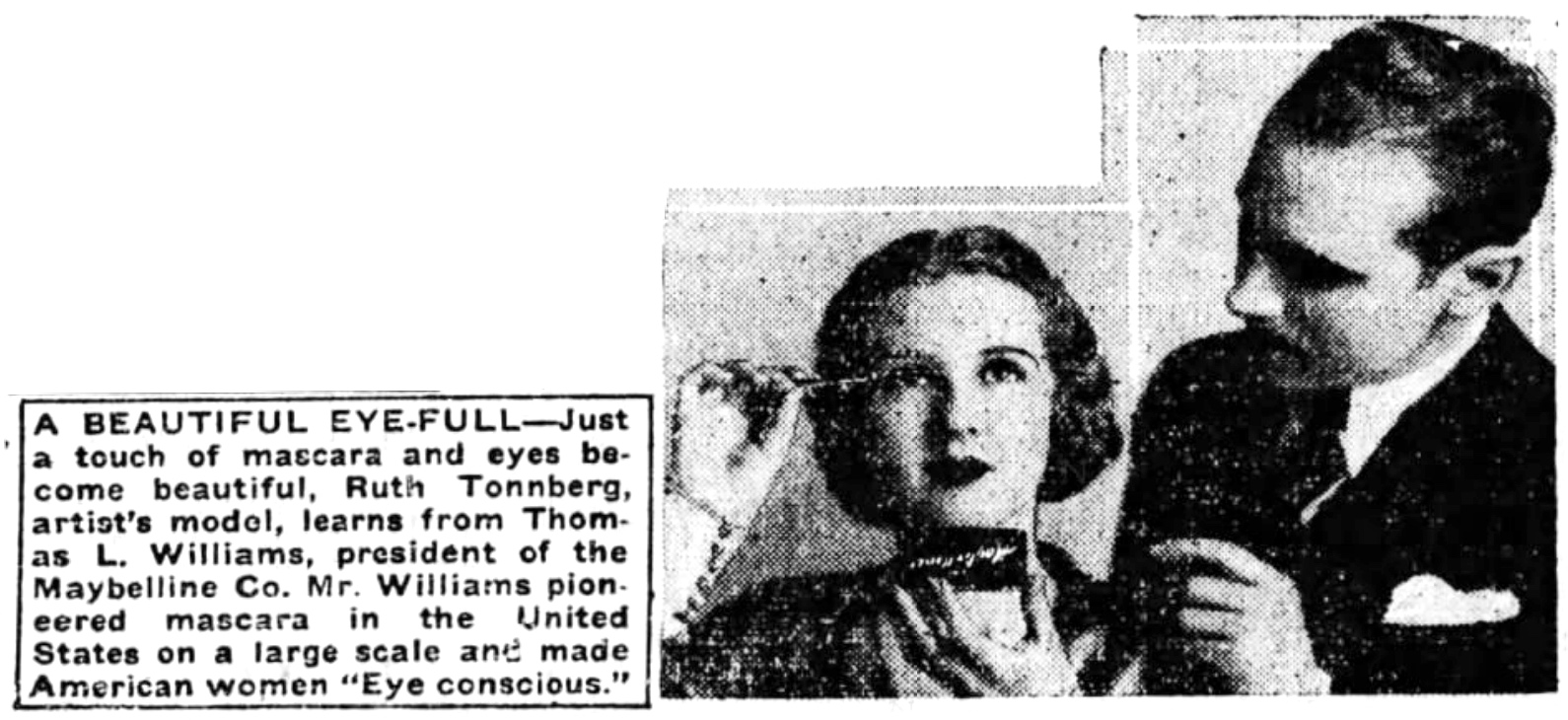
III. The “M” on Ridge Avenue
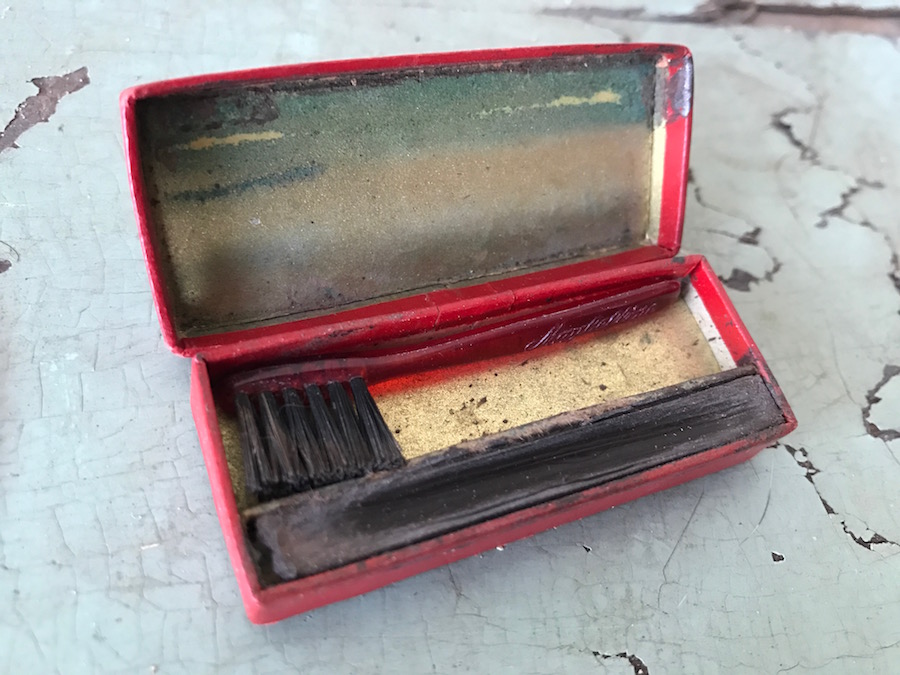 [First introduced in the ’30s, the version of Maybelline brown mascara in our museum collection likely dates from around 1945. Unlike modern mascara brushes, this design was more like a miniature toothrbrush, which probably wasn’t ideal for precision.]
[First introduced in the ’30s, the version of Maybelline brown mascara in our museum collection likely dates from around 1945. Unlike modern mascara brushes, this design was more like a miniature toothrbrush, which probably wasn’t ideal for precision.]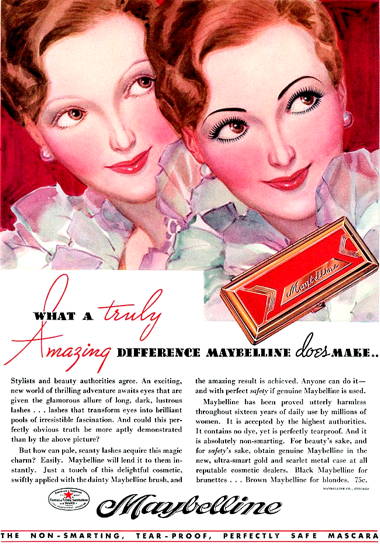 [1934 Maybelline ad featuring the “Before & After” effect and Good Housekeeping Seal of Approval]
[1934 Maybelline ad featuring the “Before & After” effect and Good Housekeeping Seal of Approval]♦ Before & After advertisements showcasing glamorous transformations
♦ First cosmetics company to do radio advertising
♦ “Carded Merchandising,” developed by the marketing genius Rags Ragland, showcased the little red Maybelline boxes in an upright display rather than stacked in a pile on the counter
♦ Film Star Faces – From the flappers of the silent film era to the likes of Joan Crawford and Betty Grable in the 1940s, Maybelline was all Hollywood from the get-go
♦ Using the Good Housekeeping Seal of Approval to communicate “trust, purity and perfection”
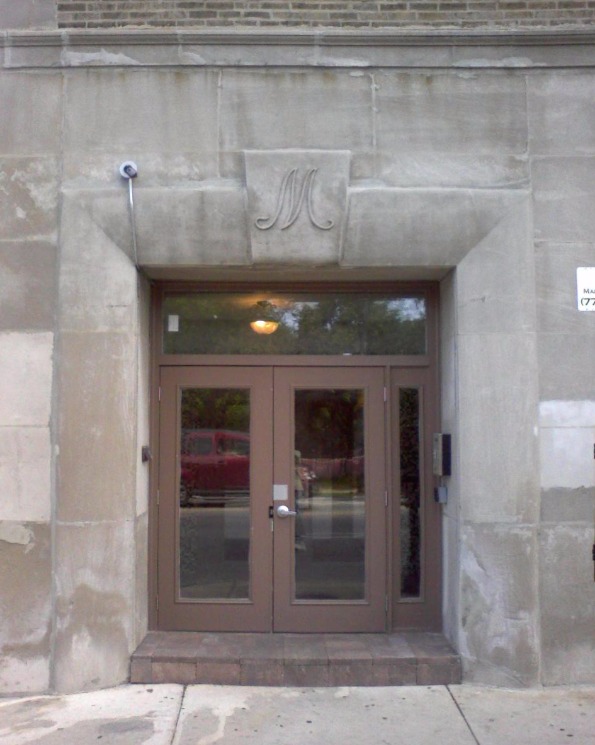 Persisting through the Depression and World War II, Maybelline was the international name in brow and lash cosmetics, fending off dozens of imitators. Tom Lyle Williams, now in semi-retirement, was spending the majority of his time in L.A. by the 1950s. Nonetheless, the company headquarters remained in Chicago at 5900 N. Ridge Ave., where constant expansion increased the workforce from just 30 in 1953 to likely at least twice that figure by the 1960s.
Persisting through the Depression and World War II, Maybelline was the international name in brow and lash cosmetics, fending off dozens of imitators. Tom Lyle Williams, now in semi-retirement, was spending the majority of his time in L.A. by the 1950s. Nonetheless, the company headquarters remained in Chicago at 5900 N. Ridge Ave., where constant expansion increased the workforce from just 30 in 1953 to likely at least twice that figure by the 1960s.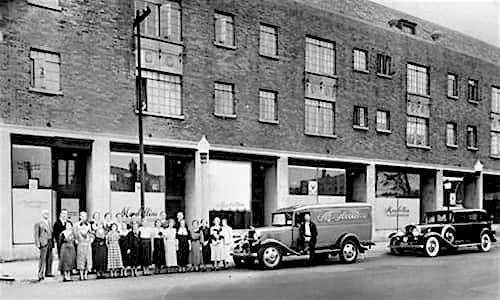
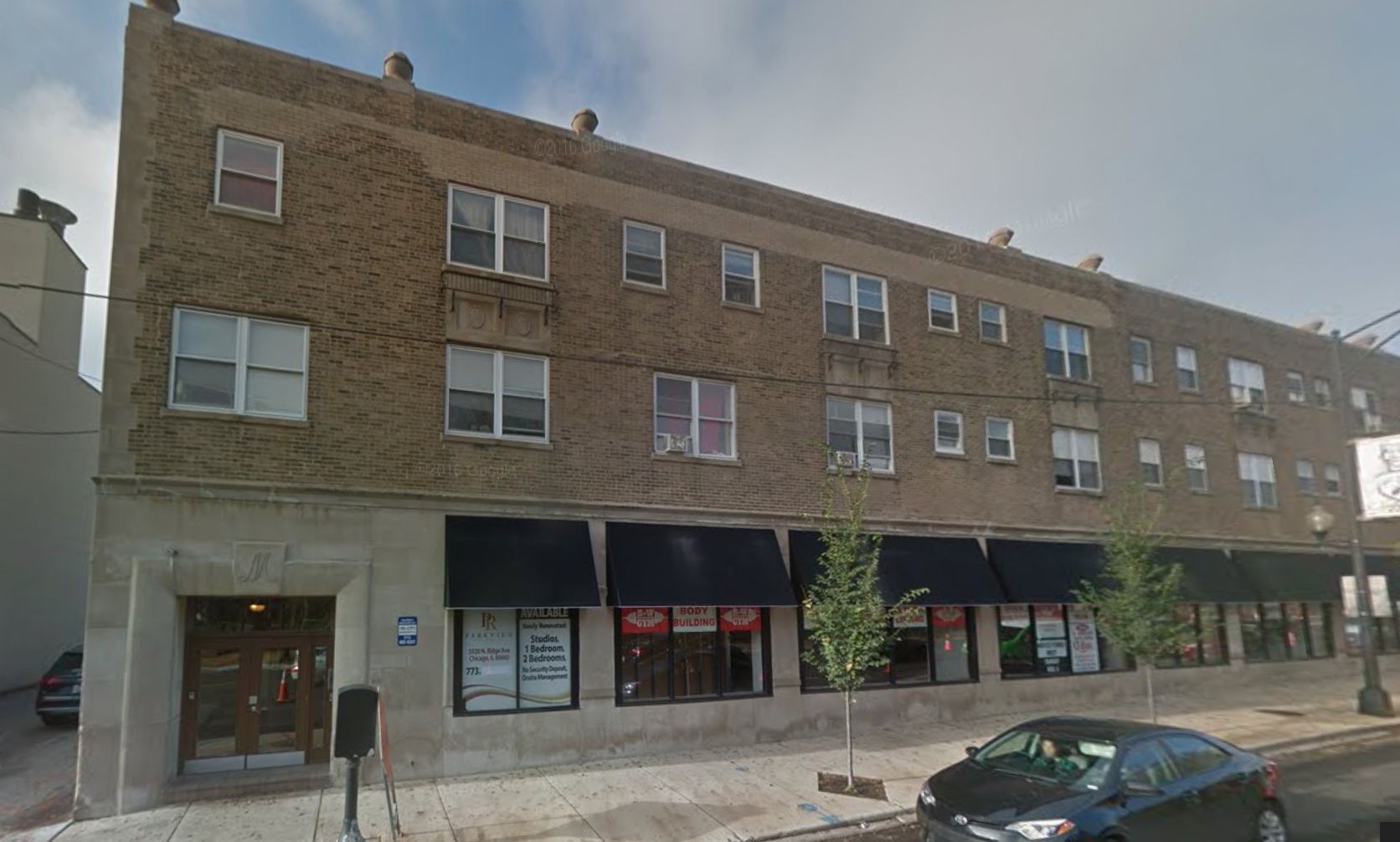
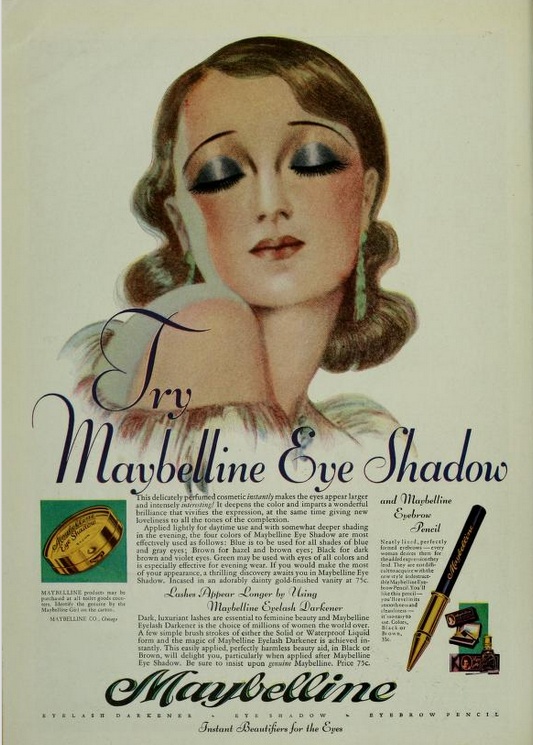 Sharrie also remembers just one docking station for all shipping and receiving by truck, and one freight elevator, which led to a warehouse and storage area.
Sharrie also remembers just one docking station for all shipping and receiving by truck, and one freight elevator, which led to a warehouse and storage area.IV. Broken Promises
 “Tom Lyle [pictured] was now 70, and was not well,” says Sharrie Williams. “The loss of his partner was devastating. He began looking for a buyer.”
“Tom Lyle [pictured] was now 70, and was not well,” says Sharrie Williams. “The loss of his partner was devastating. He began looking for a buyer.”
 Plough initially relocated the business to his own home turf in Memphis, and manufacturing was set up several years later in Little Rock, Arkansas, where much of it still remains.
Plough initially relocated the business to his own home turf in Memphis, and manufacturing was set up several years later in Little Rock, Arkansas, where much of it still remains.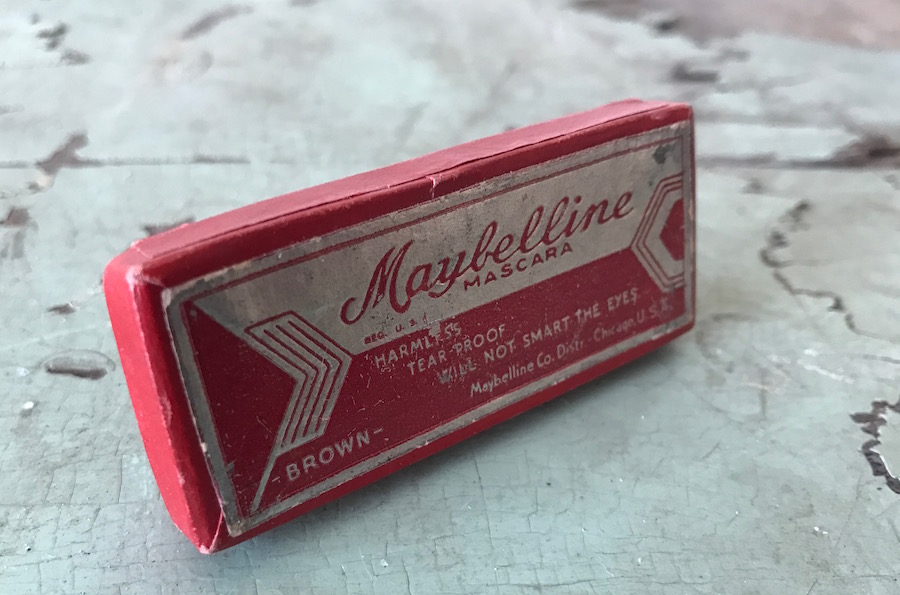
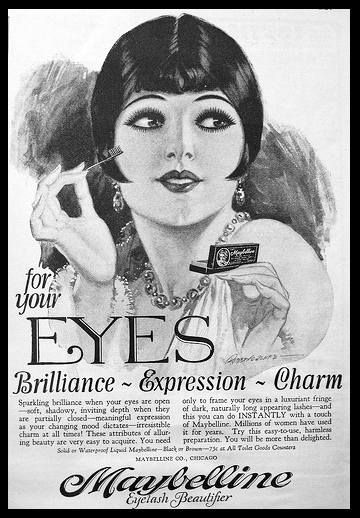
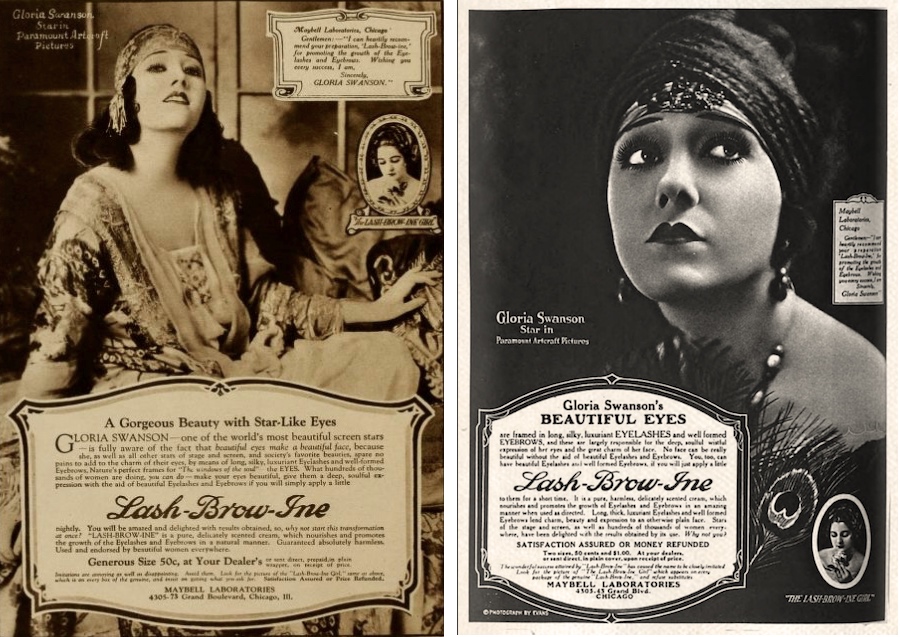 [A pair of early Lash-Brow-Ine ads starring Gloria Swanson]
[A pair of early Lash-Brow-Ine ads starring Gloria Swanson] [1940 ad starring Betty Grable, who kind of resembles Jennifer Lawrence in this one]
[1940 ad starring Betty Grable, who kind of resembles Jennifer Lawrence in this one]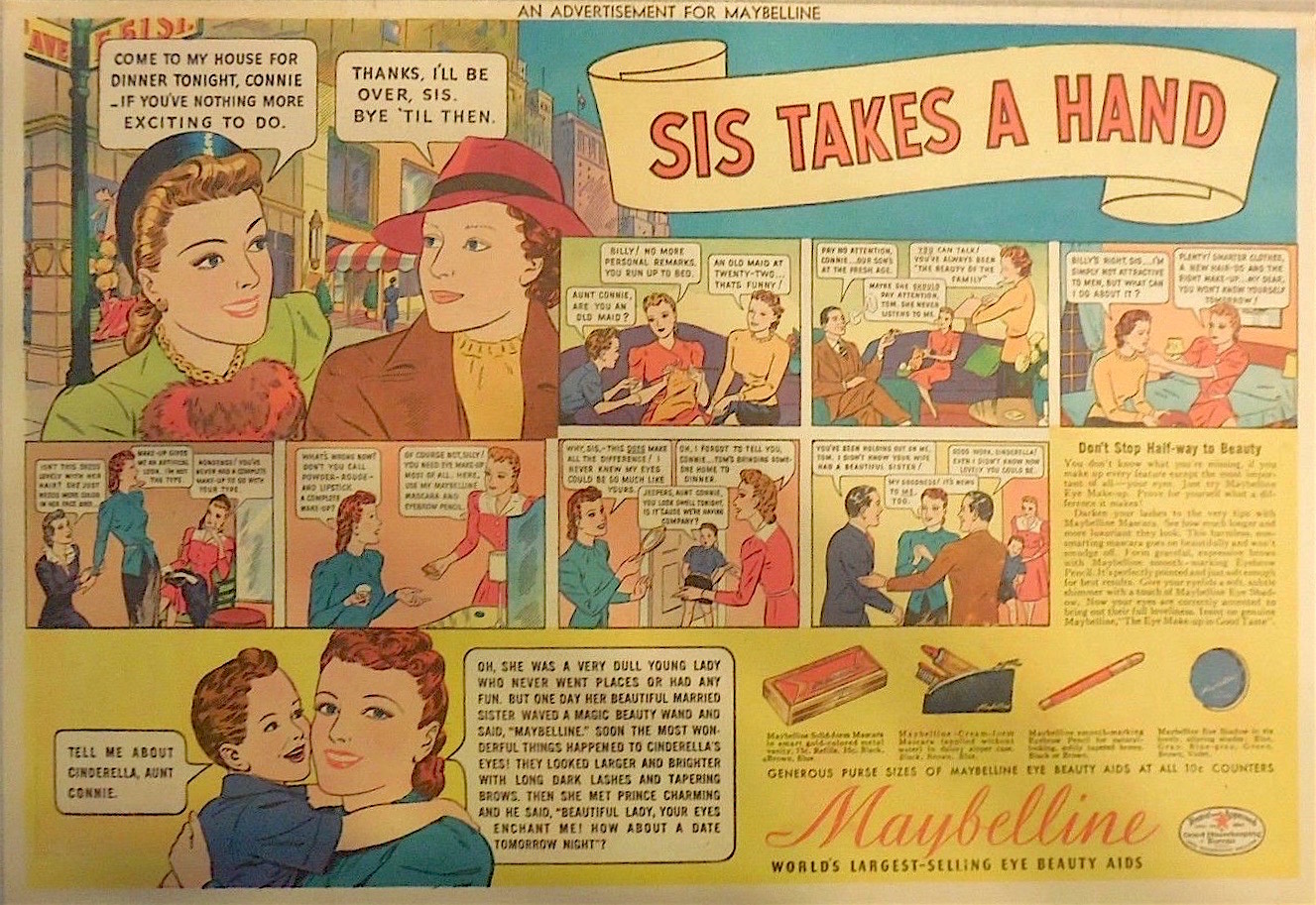 [Above and below: Maybelline ads from the Sunday Comics section of newspapers in 1940 didn’t exactly scream “women’s lib.” The storylines of “Sis Takes a Hand” and “From Office to Altar” both use Maybelline products as a bridge to help women snare a husband; the end-all-be-all motivator for the mid-century single lady.]
[Above and below: Maybelline ads from the Sunday Comics section of newspapers in 1940 didn’t exactly scream “women’s lib.” The storylines of “Sis Takes a Hand” and “From Office to Altar” both use Maybelline products as a bridge to help women snare a husband; the end-all-be-all motivator for the mid-century single lady.]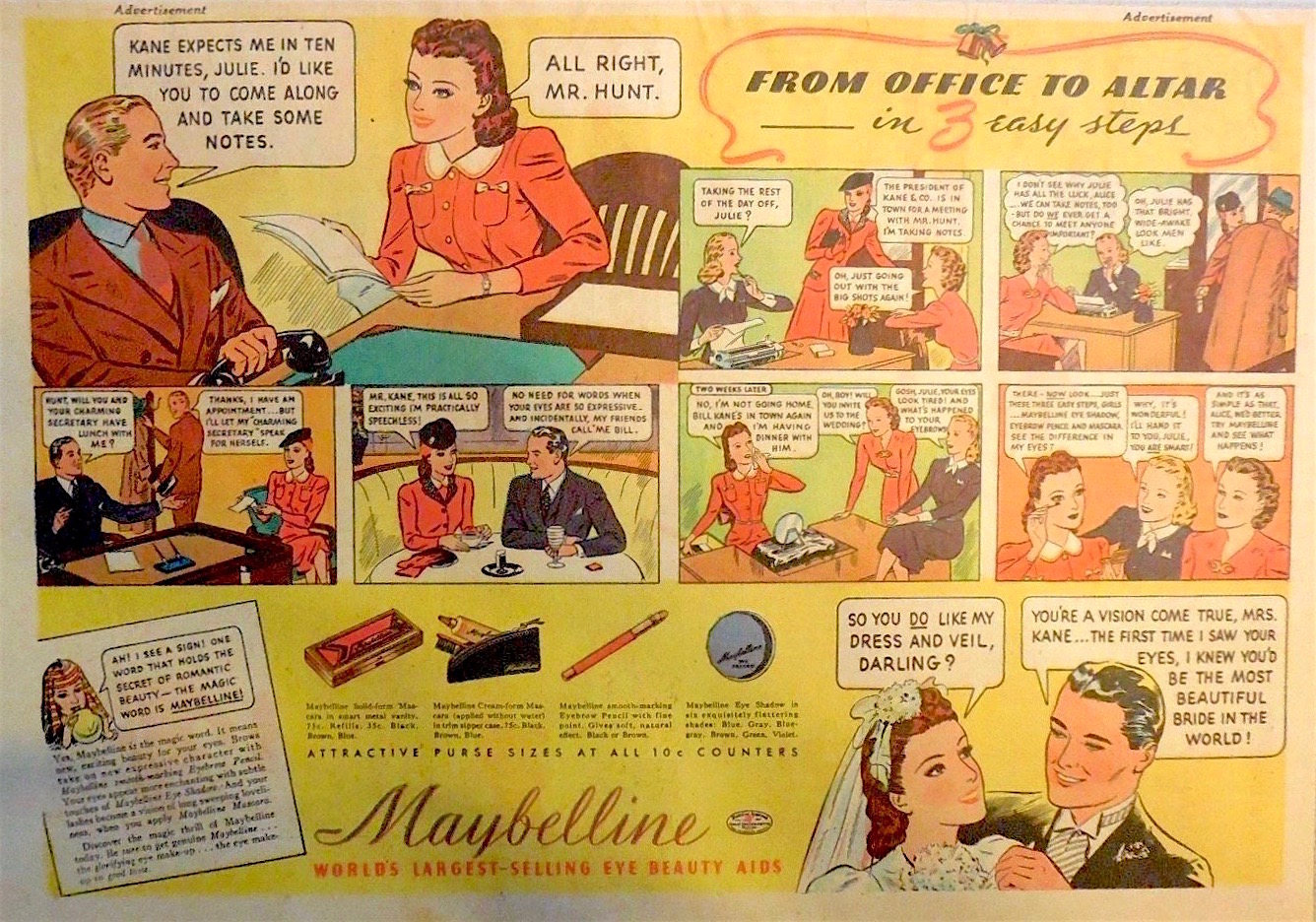
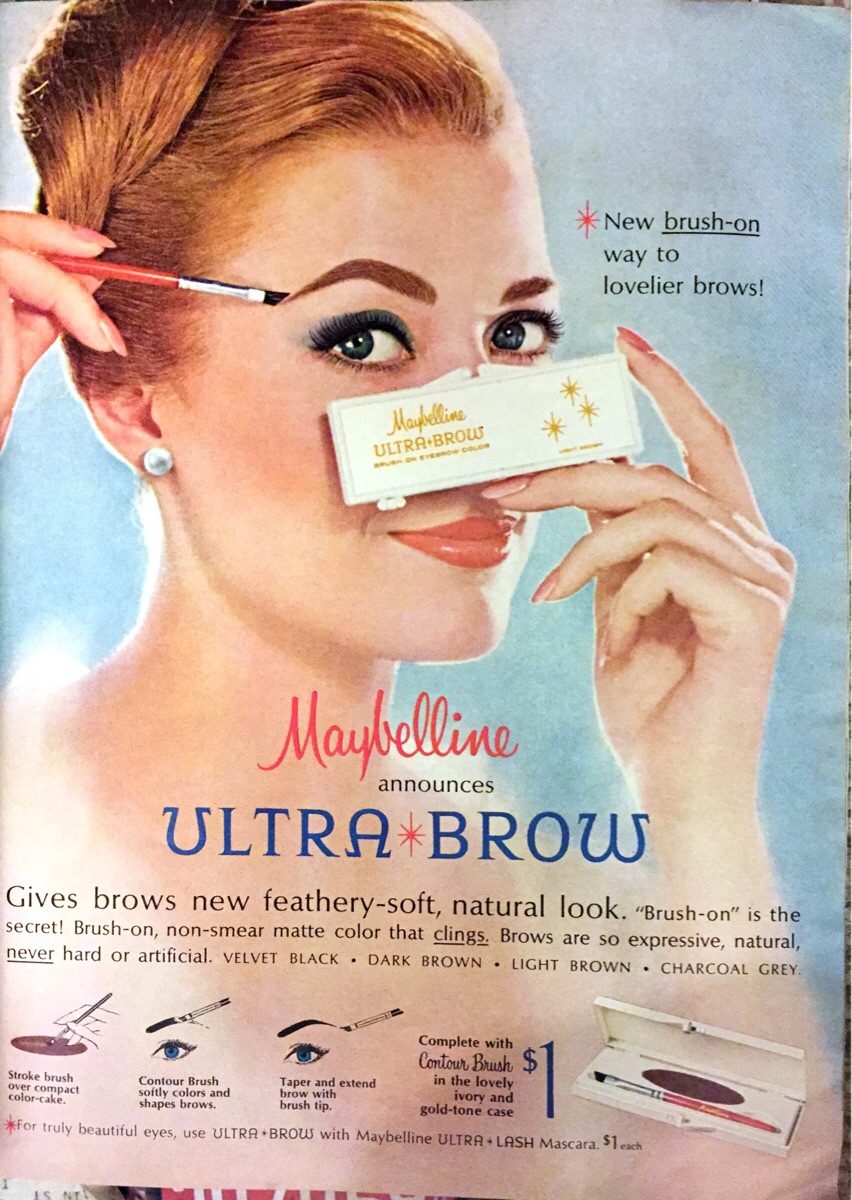
Sources:
Archived Reader Comments:
 ” —CPL, 2018
” —CPL, 2018The Villa Valentino: a showplace in the Hollywood Hills.
 |
Read more about the Villa Valentino in The Maybelline Story and the Spirited Family Dynasty Behind It.
Women still want lush lashes and brows and perfect skin 105 years later
By the 1930s, "eye lash darkener," as it was called, was officially a thing, and Maybelline sold it in cake form with a separate brush. There was a scare surrounding a lash dye at the time called Lash Lure (not made by Maybelline), which blinded some women, so the company was very careful to say that no dyes were used and that the products were "safe." In the '30s, brow pencils and eye shadow also came into vogue. This was also the birth of the makeup tutorial's earliest ancestor. The brand produced ads of Betty Grable demonstrating a three-step application process, which ran in popular magazines. The company also notes that in the '30s, the time of the Great Depression, women couldn't afford a new dress, but they could certainly afford a new eye shadow.
1960s
Then in 1971, the company cemented its hold on women's lashes for good by launching the now-iconic pink and green Great Lash Mascara. In the late '60s, the company was sold to Schering-Plough.
1980S
1990S
In 1990, Maybelline changed hands again, this time to investment firm Wasserstein Perella and Co. One of the most famous ad slogans of all time was also introduced during this decade: "Maybe she's born with it. Maybe it's Maybelline." (Admit it. You just sang the jingle in your head.) Christy Turlington featured prominently in commercials during the '90s. L'Oreal acquired the brand in 1996 and still owns it. Over the last 20 years, the brand has signed buzzy models like Jourdan Dunn, Gigi Hadid, Adriana Lima, Freja Beha Erichsen, Jessica White, Charlotte Free and Shu Pei Qin, and sponsored global fashion week





















